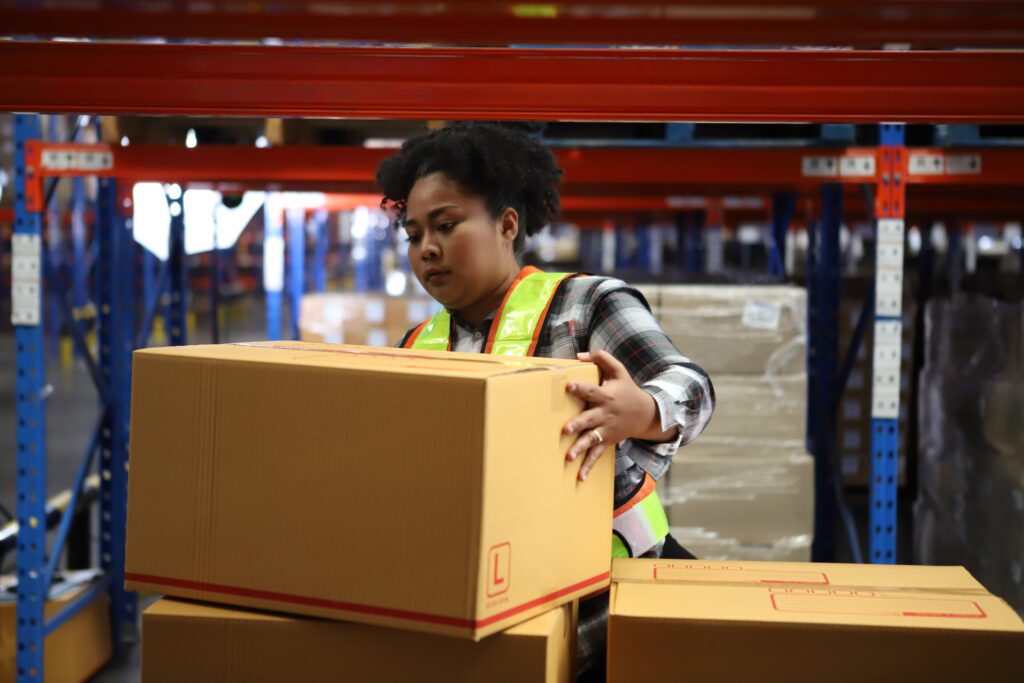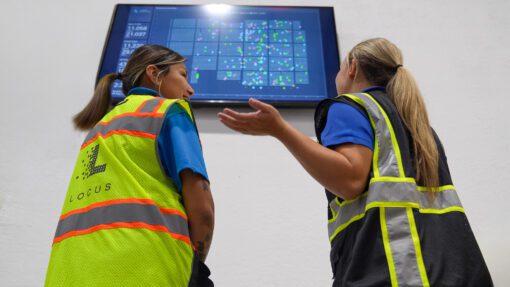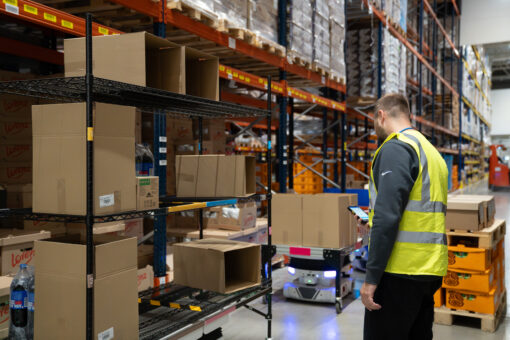WP: How to achieve 400 UPH with Locus Fast Pick
WP: How to achieve 400 UPH with Locus Fast Pick Download Now!
Maximizing Warehouse Efficiency: Insights on Pick Velocity and Automation
Mary Hart, Sr. Content Marketing Manager

At UPS Supply Chain Solutions, optimizing operations like pick velocity has become crucial for success. Thomas Stearman, Director of Industrial Engineering at UPS, recently shared valuable insights on my Warehouse Automation Matters podcast about enhancing warehouse efficiency through improved pick velocity and innovative automation strategies.
Pick Velocity Defined
Pick velocity, as Stearman explains, refers to how quickly items can be picked in a warehouse. This metric is vital not just at the individual worker level but also for the overall flow and capacity of the warehouse. With e-commerce growth and increasing demands for faster order fulfillment, improving pick velocity has become more critical than ever.
How to Boost Pick Velocity
UPS has implemented several strategies to enhance pick velocity:
- Digital Optimization: Working with their Warehouse Management System (WMS) partner, UPS has improved processes even in manual environments. They've introduced batch picking and utilize a Warehouse Execution System (WES) to optimize picks, reducing the number of times workers need to visit a location.
- Physical Automation: UPS has partnered with various automation providers to implement systems like shuttles, AS/RS, and rack-to-person systems.
- Robotic Automation: The company has used Locus Robotics to improve picking efficiency. This system has helped UPS double or triple productivity in picking areas while reducing labor dependency.
Benefits Beyond Efficiency
Interestingly, the benefits of these automation efforts extend beyond just improved pick velocity. Stearman notes that employee satisfaction has increased, leading to reduced turnover. The ergonomic design of systems like Locus Robotics and the ability to customize interfaces in different languages have also made the work more enjoyable and accessible for UPS's diverse workforce.
Picking Velocity Challenges and Solutions
While focusing on pick velocity is crucial, Stearman warns against neglecting other areas of warehouse operations. As picking speed increases, it's essential to ensure that packing and other downstream processes can keep up to avoid new bottlenecks.
Another challenge that automation can uncover is inventory accuracy issues. When systems like Locus Robotics direct pickers to specific locations, any inventory discrepancies become immediately apparent. While this can be initially disruptive, it ultimately leads to improved inventory management and order accuracy.
Flexibility and Scalability
One of the key advantages of systems like Locus Robotics is their flexibility. As businesses grow and order profiles change, these systems can easily adapt. This flexibility is particularly crucial during peak periods, allowing warehouses to scale up operations without any disruption nor significant long-term investments.
Stearman highlights the financial benefits of the Locus Robotics’ Robots-as-a-Service (RaaS) model. Unlike traditional automation that requires substantial upfront capital expenditure, Locus offers a more flexible model where additional robots can be brought in for peak periods without year-round costs.
The Future of Warehouse Automation
Looking ahead, Stearman is excited about the potential of AI in warehouse operations, particularly for tasks like slotting optimization. He also sees significant opportunities in improving the packing process, which has become a focus area now that picking has been largely optimized.
A recent project combining Locus Robotics with PackSize technology showcased the potential for holistic improvement. This integration not only enhanced pick efficiency but also reduced packing labor and shipping volume, leading to sustainability benefits—a growing priority for UPS and its customers.
Advice for Warehouse Managers
For those looking to improve their warehouse operations, Stearman offers several pieces of advice:
- Foster a culture that encourages risk-taking and doesn't penalize failure.
- Avoid analysis paralysis—start with small proof of concepts rather than extensive data analysis.
- Consider an entry point to automation, especially for existing warehouses looking to upgrade without a complete overhaul.
- Focus on scalable solutions that can be applied across multiple areas of the warehouse.
- Allow team members to focus deeply on improvement initiatives for the best results.
By integrating these innovative approaches, warehouse managers can ensure their facilities stay efficient and employee-friendly, while meeting the growing demands of the e-commerce era.
Want to listen to the Pick Velocity episode of “Warehouse Automation Matters”, or to listen to any other episode? Check out the full podcast series.




